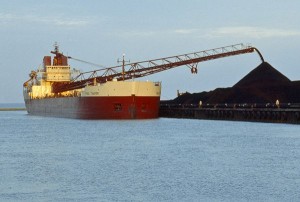 By Peter Galuszka
By Peter Galuszka
There’s a predictable drumbeat in the Old Dominion that is trying to blame Big Coal’s economic weakness on federal regulators.
A weekend ago, a group called the Federation for American Coal, Energy and Security, a “grass roots” group with ties to the coal industry, staged a rally in Abingdon attended by about 2,000 to protest what were described as onerous new regulations by the U.S. Environmental Protection Agency.
Attending was Republican George Allen, a former governor and U.S. Senator who is running to win back his Washington seat and has worked for several years as an Inside-the Beltway energy lobbyist. He told the crowd: “If we unleash our American energy resources from the coalfields of Appalachia to the Rockies to the coast, we’d have hundreds of jobs … an industrial renaissance.” Mark Warner, a Democrat who is a U.S. Senator, did not attend the rally.
The campaign is spilling over into the opinion pages of the state’s right-wing press. The Richmond Times Dispatch ran a piece Sunday by a conservative lobbyist claiming that new EPA rules (which he doesn’t bother describing) will shut down coal generation and hurt Virginia, described as a “top coal-producing state, with 32,000 jobs either directly or indirectly dependent upon coal.”
A few little problems with the facts here: EPA is proposing new, tougher rules to limit carbon dioxide emissions – a major ingredient in global warming — at NEW coal-fired electricity plants. It is toughing up regs on toxic emissions from older plants involving such deadly chemicals as mercury. The regulations are needed and long overdue.
The coal industry and its advocates have yet to explain in detail how these rules are shutting down coal-fired generation which was responsible for 50 percent of the U.S. power production and now has fallen to about 40 percent. The decline in the energy production mix is due directly to dramatically lower prices for natural gas, a flood of which has been unleashed by drilling methods known as fracking and by new production in the U.S. Southwest.
Some of those coal-fired plants supposedly being affected are 40 or 50 years old, have been polluters for years and are too costly for electric utilities to upgrade given the alternative of switching to cheaper natural gas. On the list are Dominion’s Chesapeake plant and one in Yorktown. The former was rated as a top 10 polluter in Virginia in 2009 and was built in 1953. The latter was built in 1957. What’s more, Dominion announced they would close both plants within the next four years last September, which is long before the EPA finally came around with new and watered-down regulations in March. Yet, the Big Coal propaganda campaign lists the facilities as being victims of the new federal regulations.
Is Virginia a top coal-producing state? Not exactly. Production peaked in 1990 and it has been downhill ever since. Most recent production figures show the state produced 21 million tons of coal which is about 2 percent of the U.S. total or about half what it was at its peak. The reason is that the seams are getting too small and too expensive to mine. It has nothing to do with environmental rules at power stations. Virginia is only No. 12 on the list of coal states and its coal production is tiny compared to neighboring West Virginia and Kentucky. Compared to Wyoming’s it is infinitesimal.
The propagandists may be ignorant of coal’s history. In the 1970s and 1980s, Virginia’s dying coal industry got a boost from — federal regulations. New air pollution laws required that low sulfur coal be burned. Virginia had lots of it and the industry got a shot in the arm — until utilities improved their technology to burn dirtier coal.
No matter. Much of the coal from Virginia doesn’t even go to electric utilities. According to Virginia Tech, from 30 to 50 percent of Virginia coal is used for metallurgical purposes to make steel. Most of it is exported to Europe and Asia. Global market demands, especially in fast-growing India and China, drive the met coal market. No matter what pollution rules the EPA proposes, they won’t have a thing to do with the global market for met coal. That is because the EPA does not regulate steel mills in South Korea, Poland or China.
There could be a reason why Big Coal wants to keep the focused on the idea that coal’s exclusive purpose is to keep our lights on. On April 5, 2010, an explosion snuffed out the lives of 29 miners at the Upper Big Branch mine in Montcoal, W.Va. It was owned by Richmond-based Massey Energy, a firm so notorious for safety violations that it was forced to be taken over by Bristol-based Alpha Natural Resources last June. Both Massey and Alpha have acquired massive reserves of metallurgical coal in Virginia and surrounding coalfields in recent years.
Every ounce of coal mined at Upper Big Branch facility was of the metallurgical variety. The coal was bound for export to foreign steel mills. Once again, the mine’s coal had nothing whatsoever to do with electricity generation. While the industry fights the EPA, the reality is that it is battling behind the scenes to stop Congress from passing deep mine safety laws that might have prevented Upper Big Branch.
Note: The author’s book, “Thunder on the Mountain, Death at Massey and the Dirty Secrets Behind Big Coal,” will be published by St. Martins Press, New York, on Sept. 18, 2012.


